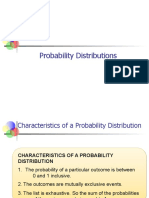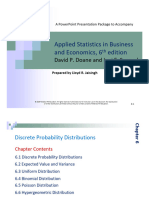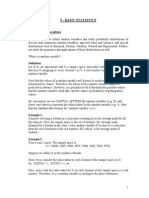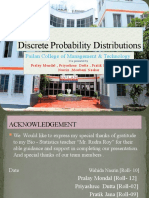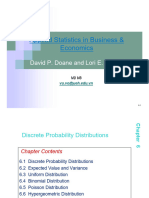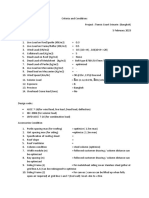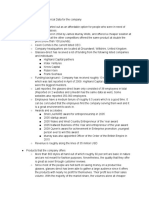0% found this document useful (0 votes)
5 views50 pagesDiscrete Probability
The document discusses discrete probability distributions, highlighting the differences between discrete and continuous distributions, including their probability functions and graphical representations. It uses the example of a Starbucks manager to illustrate how understanding customer arrival probabilities can inform staffing decisions. Additionally, it covers concepts such as random variables, expected value, variance, and the binomial distribution, providing formulas and examples for calculating these statistical measures.
Uploaded by
Ashmita MinhasCopyright
© © All Rights Reserved
We take content rights seriously. If you suspect this is your content, claim it here.
Available Formats
Download as PDF, TXT or read online on Scribd
0% found this document useful (0 votes)
5 views50 pagesDiscrete Probability
The document discusses discrete probability distributions, highlighting the differences between discrete and continuous distributions, including their probability functions and graphical representations. It uses the example of a Starbucks manager to illustrate how understanding customer arrival probabilities can inform staffing decisions. Additionally, it covers concepts such as random variables, expected value, variance, and the binomial distribution, providing formulas and examples for calculating these statistical measures.
Uploaded by
Ashmita MinhasCopyright
© © All Rights Reserved
We take content rights seriously. If you suspect this is your content, claim it here.
Available Formats
Download as PDF, TXT or read online on Scribd
/ 50
